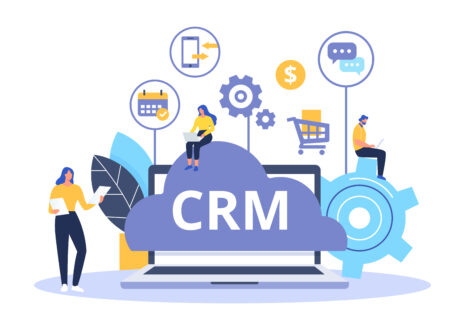All effective marketing plans begin with a simple objective. SMART Goals are specific measures, actionable, results-oriented, and time-bound. The results are calculated quarterly as well. These goals support your advertising strategy, tie this strategy into your budget, and allow for tracking the company’s growth in larger business plans. Deciding on a traditional and digital marketing strategy based on your goals isn’t an easy one. Companies can spend a good portion of their budget creating a good marketing strategy.
Before choosing a strategy it’s important to understand the types of marketing channels you can use and the ideal one that suits your business. In this article, we’ll break down the two most popular marketing strategies that you should be aware of and understand.
What’s the difference between digital marketing and traditional marketing?
Digital versus traditional marketing focuses most heavily on how people perceive and experience their advertising message. While traditional marketing uses traditional media like magazines and newspapers, digital marketing utilizes digital media including social media marketing and the internet. Traditional marketing is no longer old-fashioned. Traditional advertising plays a significant part in people’s lives. The impactful television advertisement’s immersive experience and its tactile content are still relevant to people today because of lasting memories. It can still be relevant. However, in the age of internet, it’s important to understand the reach digital marketing can bring to a global or local audience.
Advantages of Digital Marketing
Your digital marketing strategy is much more focused on getting people who need you for their specific needs to find you. We call this pull marketing, meaning you’re here when someone searches on their phone or laptop or just scrolls down their Facebook newsfeed. This becomes especially important with the growth of social media marketing as it plays an important role in digital marketing. There are numerous benefits to digital marketing.
Budgets are easier to redistribute
The digital budget can be seen in many ways as a placeholder. You could spend $500 a month running Facebook ads and branding, but find out that these marketing efforts perform under expectations. So seeing this immediately pauses your campaign. The expenditures are halting. Then you get an additional $400 per month for your marketing team. The company received three lead shipments within three days of publication, based on the white paper.
A/B Testing Timeline Is Greatly Reduced
Digital marketing budgets are flexible as the test process allows the easy identification of the best performers. Budgets can shift from the non-performing campaign towards the well-funded campaign. An underperforming campaign can be stopped as a result of a company examining if there needs any improvements. Unlike conventional advertising, it takes weeks to finish analyzing data, and that might stretch to months. This is the same for television, newspaper, radio and print media.
Decision-making & Accountability Move to the Front Line
Digital Marketing empowers the employee in the organization to act when needed. With multiple campaigns being conducted simultaneously, leadership has no time to respond and micromanage each. The leadership should monitor campaigns with data analytics and reports regularly. Traditionally marketing strategy decisions are debated right after the start of a campaign, often at an enormous cost to companies.
Reach a bigger audience quicker and faster – More targeted customer
Digital marketing efforts don’t have to be tailored to one specific country, city or even location. The campaigns can reach a global scale relatively quickly if you’re looking to expand your message outside your network. The same can be said for targeted campaigns. Digital marketing allows you to get specific about who you want to reach across any digital channels.
Advantages of Traditional Marketing
When we talk about traditional marketing channels, we are referring to activities that existed prior to dotcom and internet. Marketing ‘invades’ the target audience. The “culprits”: Television, newspaper, billboards, radio, booklets, posters etc. This is their main characteristic. Advertising across this platform aims to reach the target audience.
Tangible promotional materials last forever
Traditional marketing materials, including brochures, flyers or other materials, can be kept and recycled. Most of those whose eyes are open and they pick out a brochure save this for them in their fridge and put them in their papers.
Traditional marketing is still the best way to reach a mature demographic.
Traditional marketing channels to older consumers is largely different in terms of the age of the population than to the Z generation. The over 65 population generally doesn’t use the Internet so can’t easily reach it via mobile devices or laptops. When your prospective clients mature you should target them with ads in newspapers, magazines, direct mail, radio commercials, and billboards.
Hard Copy Marketing Materials Are Easier To Remember
Although most people read on screens, we find paper a good way to process and recall a read. Neuroscientists overwhelmingly agree with this. One study measured how easy it was for someone to understand ad messages on paper and on digital media. According to them, the paper is more accessible to consumers with fewer words.
Choosing Digital Marketing or Traditional Marketing
Although an effective marketing strategy is vital, it is equally important to use it correctly and maximize its potential. How do I decide between traditional marketing and digital marketing? For a lot of companies, the decision to make a marketing decision may be a difficult decision but can have a significant impact on its effectiveness. How to distinguish between digital and conventional? Businesses will be able to determine how to apply Marketing strategies and how to apply them effectively. If we want our customers to grow our business, we’ll make a social network.
How do you decide between digital marketing channels and an established marketing strategy? Why should marketing professionals continue using the traditional method of marketing? All these questions can important to ask yourself when talking about digital marketing vs traditional marketing.
It’s not digital marketing versus traditional marketing – it’s digital AND traditional marketing
Traditional marketing plays an important part in marketing strategies. But to achieve better results, it is important to pair this campaign with selected high-quality online campaigns. This is one way to diversify your marketing investment by minimizing any single source of leads that might disappear after you wake up tomorrow. Digital marketing and traditional marketing can both play an important role to reach your target audience. Both should be considered when understanding the goals of your marketing strategies whether that’s online marketing or traditional methods.




